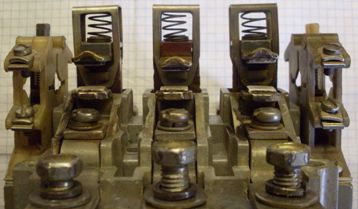Repair of magnetic starters
Repair of contacts of magnetic starters
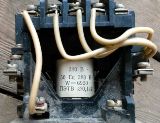 Contacts magnetic starters, on the surface of which there are traces of burning and carbon deposits, are cleaned with a cotton cloth dipped in white spirit or aviation gasoline.
Contacts magnetic starters, on the surface of which there are traces of burning and carbon deposits, are cleaned with a cotton cloth dipped in white spirit or aviation gasoline.
Splatters and "beads" of metal on the surface of the contacts are cleaned with a file. After cleaning with a pike with a thickness of 0.05 mm, check the tightness of the connection of the contact surfaces. With closed contacts, the probe should not pass more than 25% of the contact surface between the contacts.
In case of breakage or loosening, the contact spring is replaced with a new one or a suitable one from the rejected starter.
When the thread is worn or exposed in the holes for the screws for attaching the current-carrying wires, the holes with the damaged thread are cut off, and the thread of the following size is tapped with a tap.
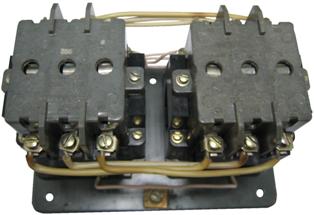
Repair of magnetic circuits of magnetic starters
Magnetic circuits of magnetic starters consist of an armature and a core on which a short-circuited coil is reinforced.
Contaminated contact surfaces of the core and armature are cleaned with a cleaning material soaked in gasoline.If there are traces of corrosion on the surface of the contact, the surface is cleaned with an emery cloth. After cleaning with a 0.05 mm probe, check the contact area between the core and the armature by pressing the armature against the core by hand. The contact surface must be at least 70% of the core section.
If the air gap between the middle core of the armature and the core of the magnetic circuit is less than 0.2 mm, the armature or core of the starter is clamped in a vise and the middle core is filled with a file with a fine slot. The anchor is then placed on the core and the gap is probed. The distance should be between 0.2 and 0.25 mm. When feeding the core, ensure that the surfaces of the armature and core core cores are parallel when the magnet system is closed.
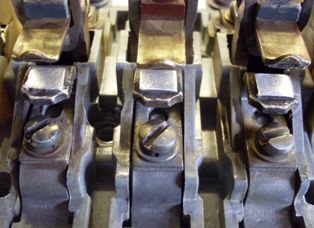
During work hardening, the contact surface of the core and armature is ground on a grinding machine until traces of hardening are removed. After grinding with probes, check the gap between the middle strands, as well as the contact area of the end strands of the armature and the core. The gap between the middle cores must be within the upper limits, and the contact area of the end cores must be at least 70% of the core cross-section.
The damaged short circuit in the starters is replaced with a new one. The damaged short circuit of the starter is cut with a file on one side and removed.
The place where the coil is installed is cleaned with a file. The new shorting turn is made of brass.Substitution of material and making a short circuit with deviations in dimensions is prohibited, as this leads to an increase in the noise of the included starter or to unacceptable heating of the loop.
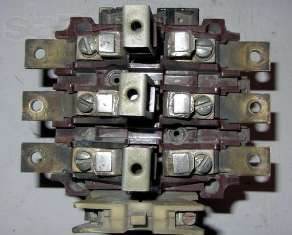
The produced short circuit in the starters is pressed into the grooves of the core or is placed on the core and its fixing plates are bent.
If the surface of the magnetic circuit has a damaged color, it is cleaned with a cleaning material soaked in gasoline or white spirit and dried. After drying, the core and anchor are lowered into an enamel bath so that the contact surfaces are not covered with varnish and the width of the unpainted strip around the edges of the contact surface is no more than 3 mm. You can also paint the core and armature of the magnetic circuit with a brush.
The painted surfaces are air-dried for 2-3 hours.
Repair of terminal clamps of magnetic starters
Burnt or oxidized contact surfaces of the terminal blocks are cleaned with a file or sandpaper, wiped with a cleaning material soaked in gasoline, and tinned with POS-30 solder.
When the thread is worn or broken in the holes for the screws for attaching the current supply wires, the holes are welded with copper or brass using a gas torch. The welding place is cleaned with a file, nailed and a hole is drilled for cutting a new thread. A thread is cut into the drilled hole to the size of the damaged thread.

